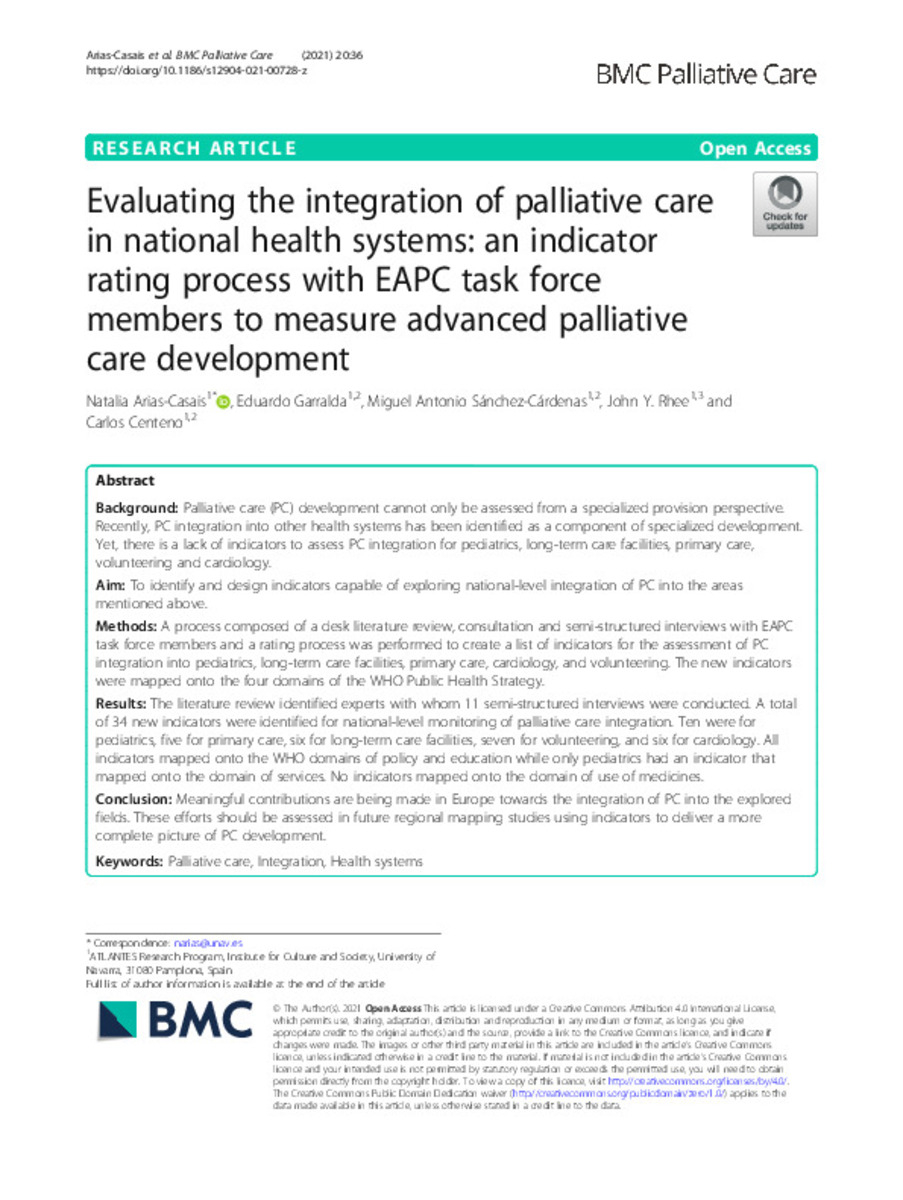Evaluating the integration of palliative care in national health systems: an indicator rating process with EAPC task force members to measure advanced palliative care development
Keywords:
Health systems
Integration
Palliative care
Editorial note:
This article is licensed under a Creative Commons Attribution 4.0 International License, which permits use, sharing, adaptation, distribution and reproduction in any medium or format, as long as you give appropriate credit to the original author(s) and the source, provide a link to the Creative Commons licence, and indicate if changes were made.
Citation:
Arias-Casais, N., Garralda, E., Sánchez-Cárdenas, M.A. et al. Evaluating the integration of palliative care in national health systems: an indicator rating process with EAPC task force members to measure advanced palliative care development. BMC Palliat Care 20, 36 (2021).
Statistics and impact
0 citas en

0 citas en

Items in Dadun are protected by copyright, with all rights reserved, unless otherwise indicated.











